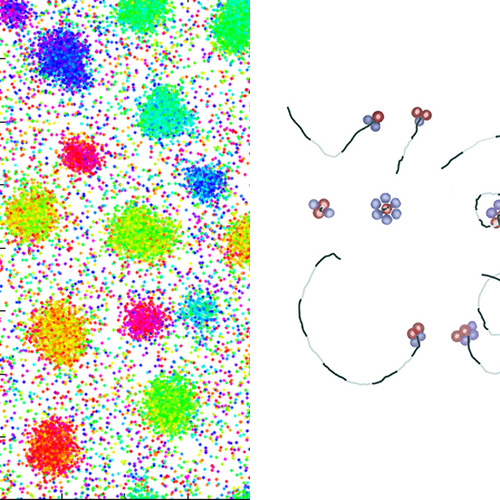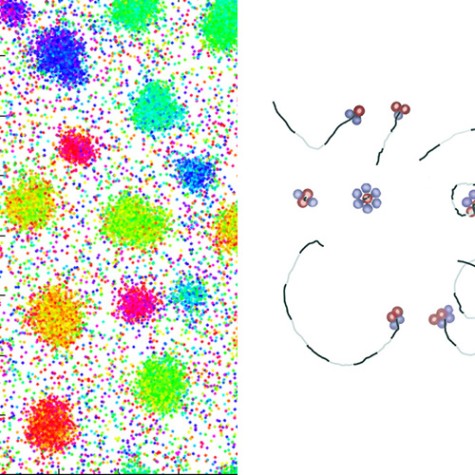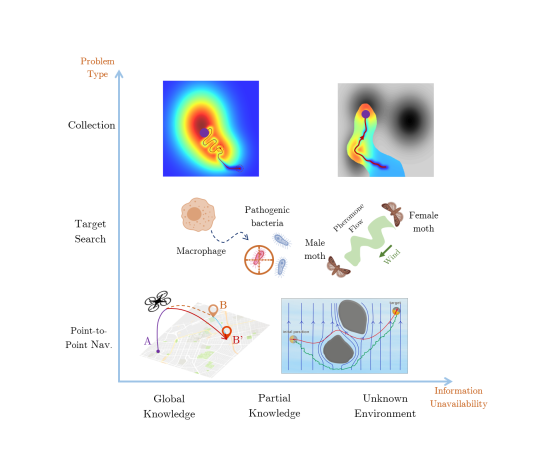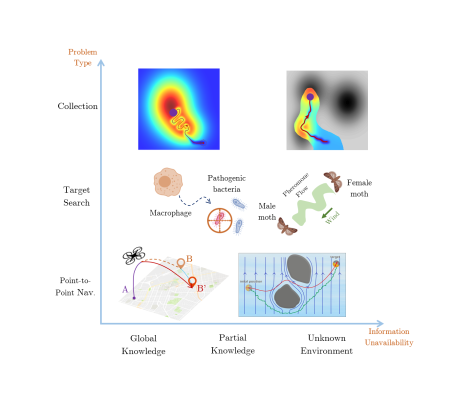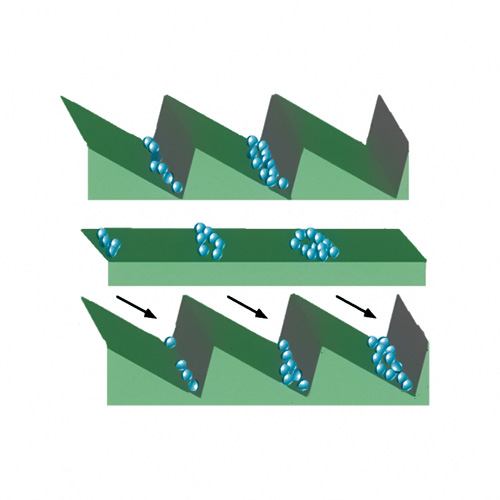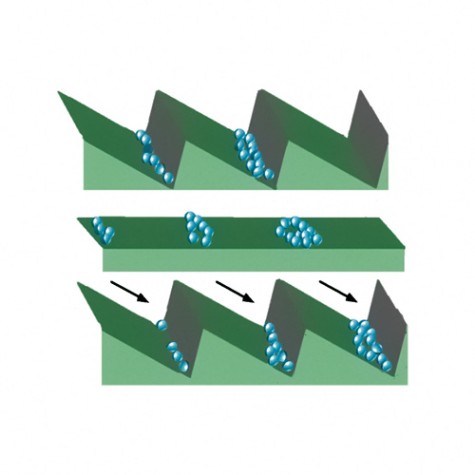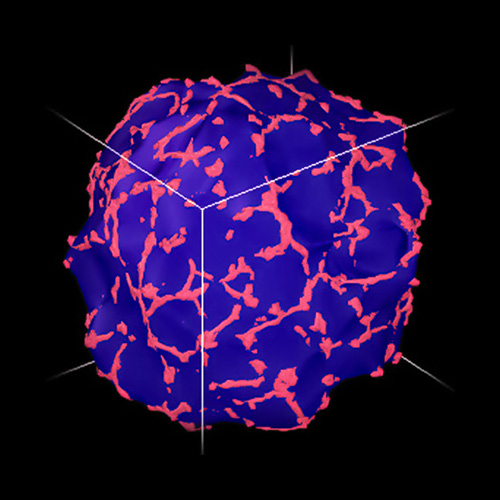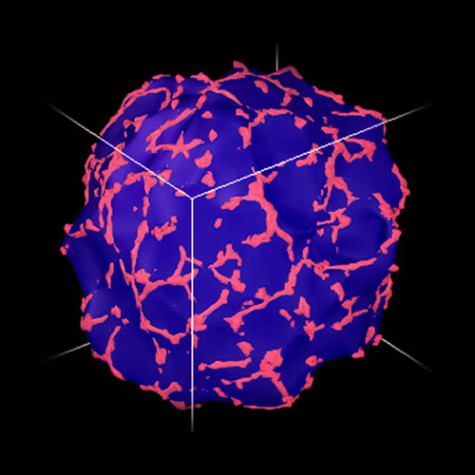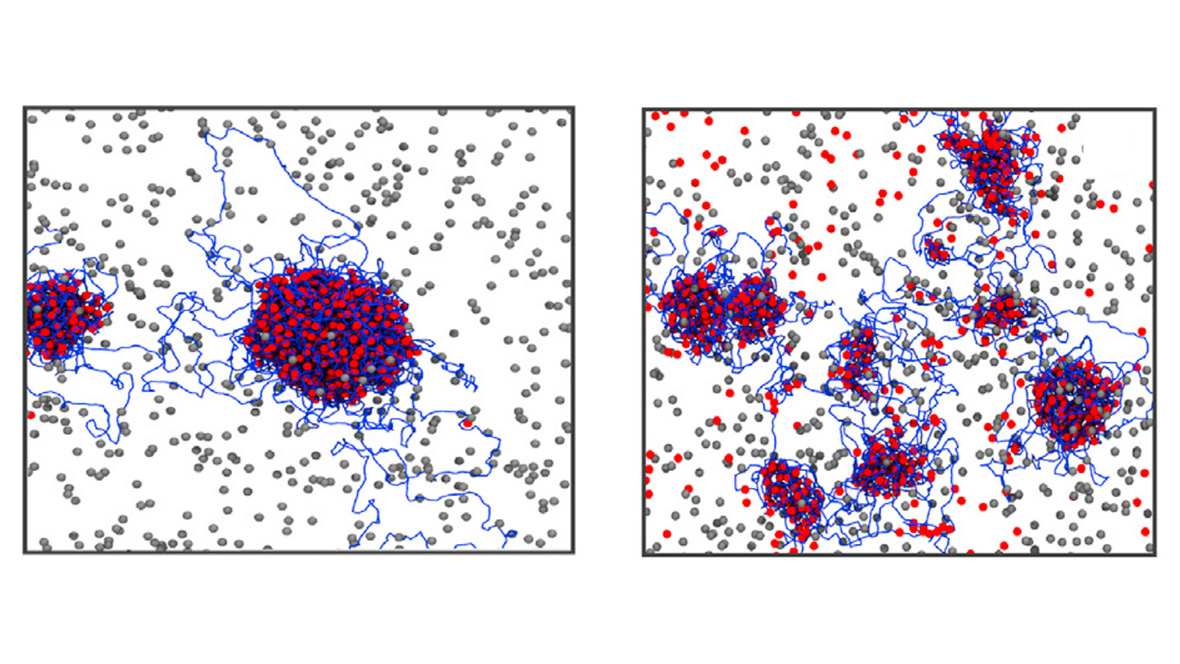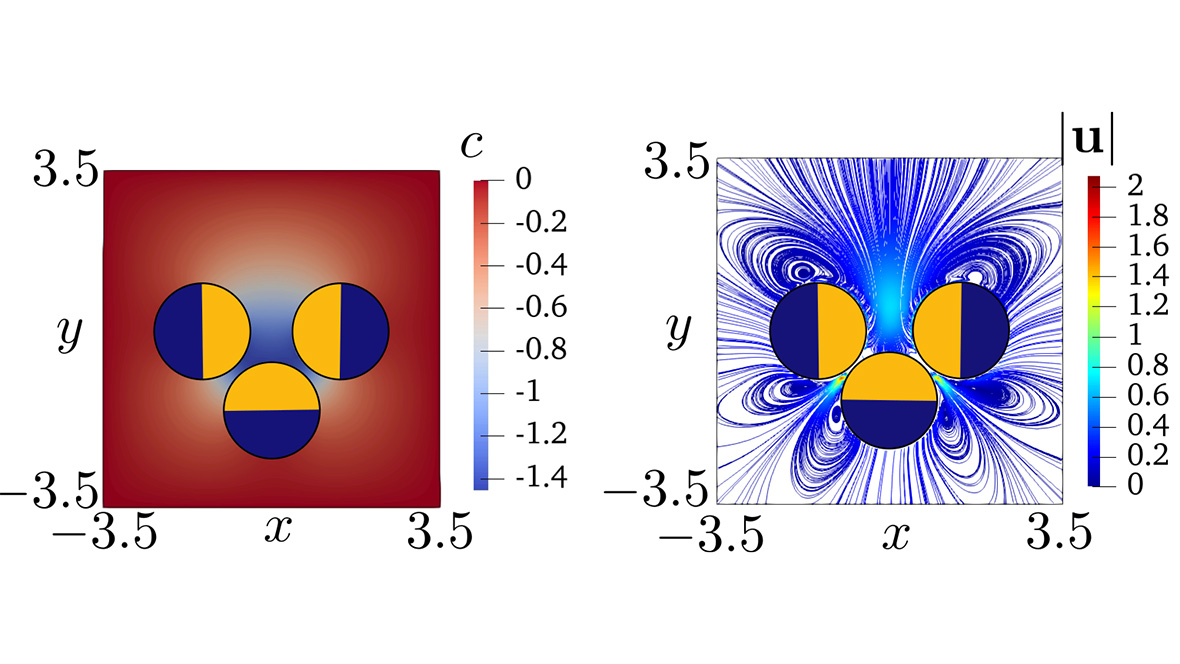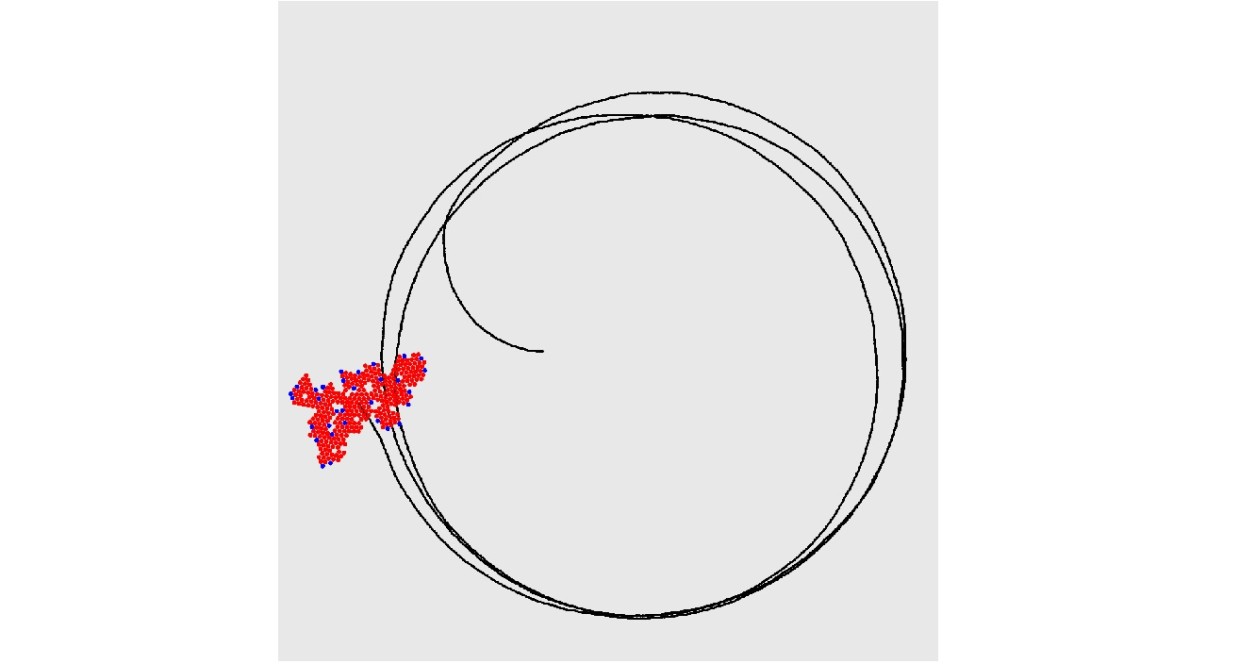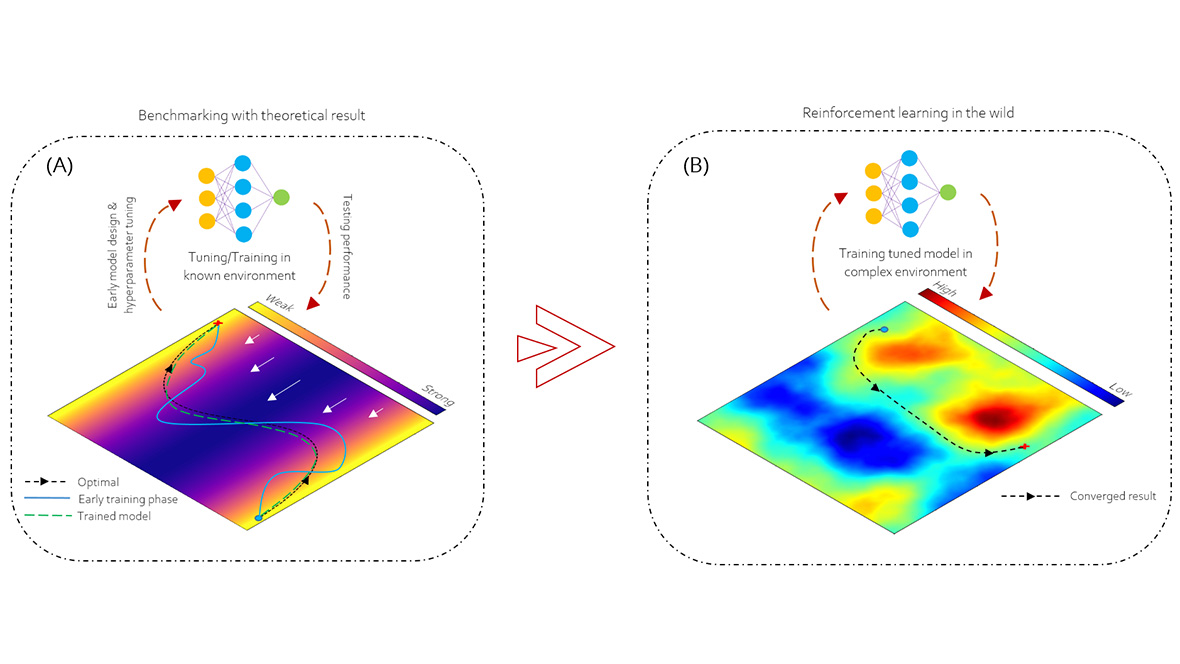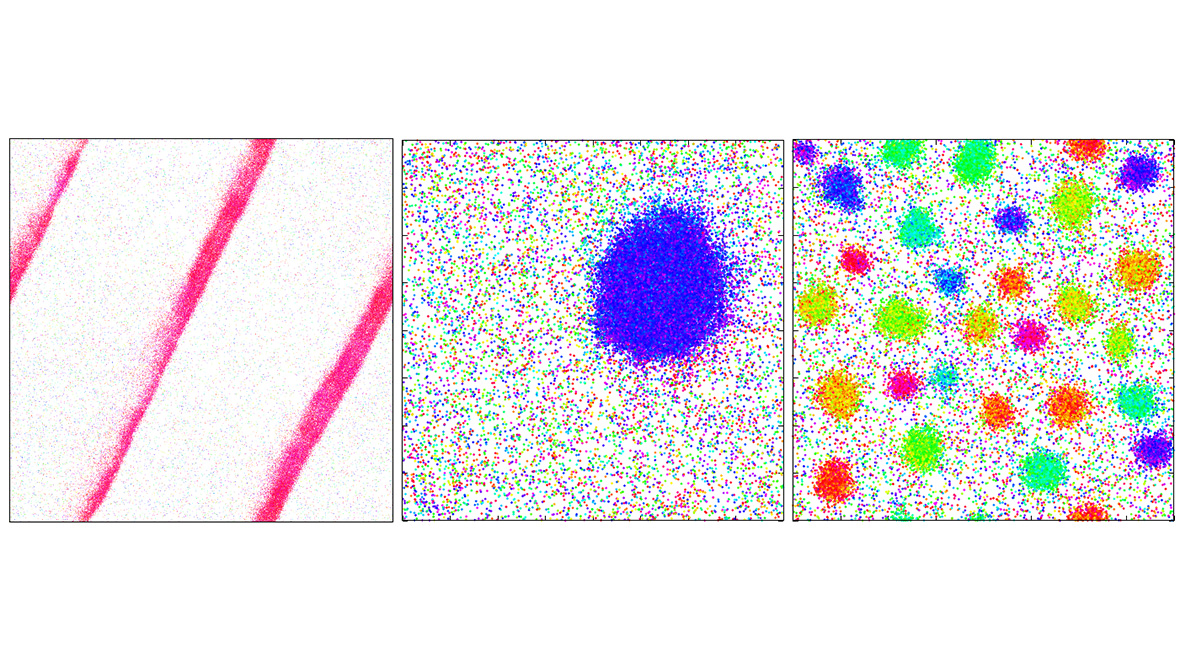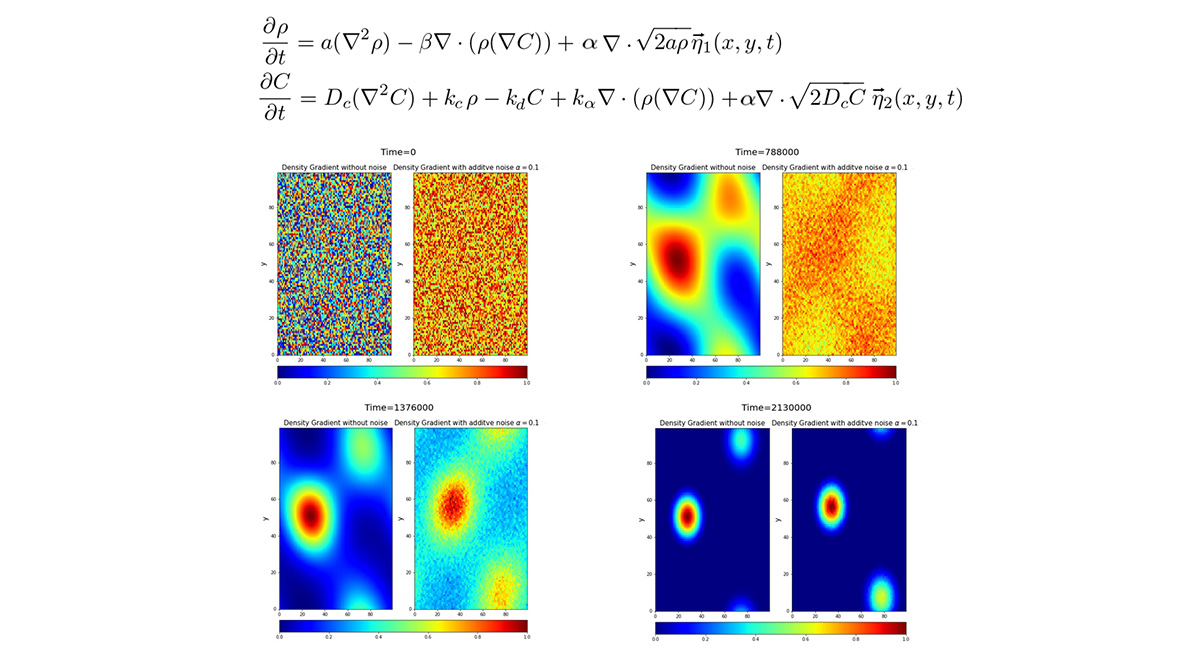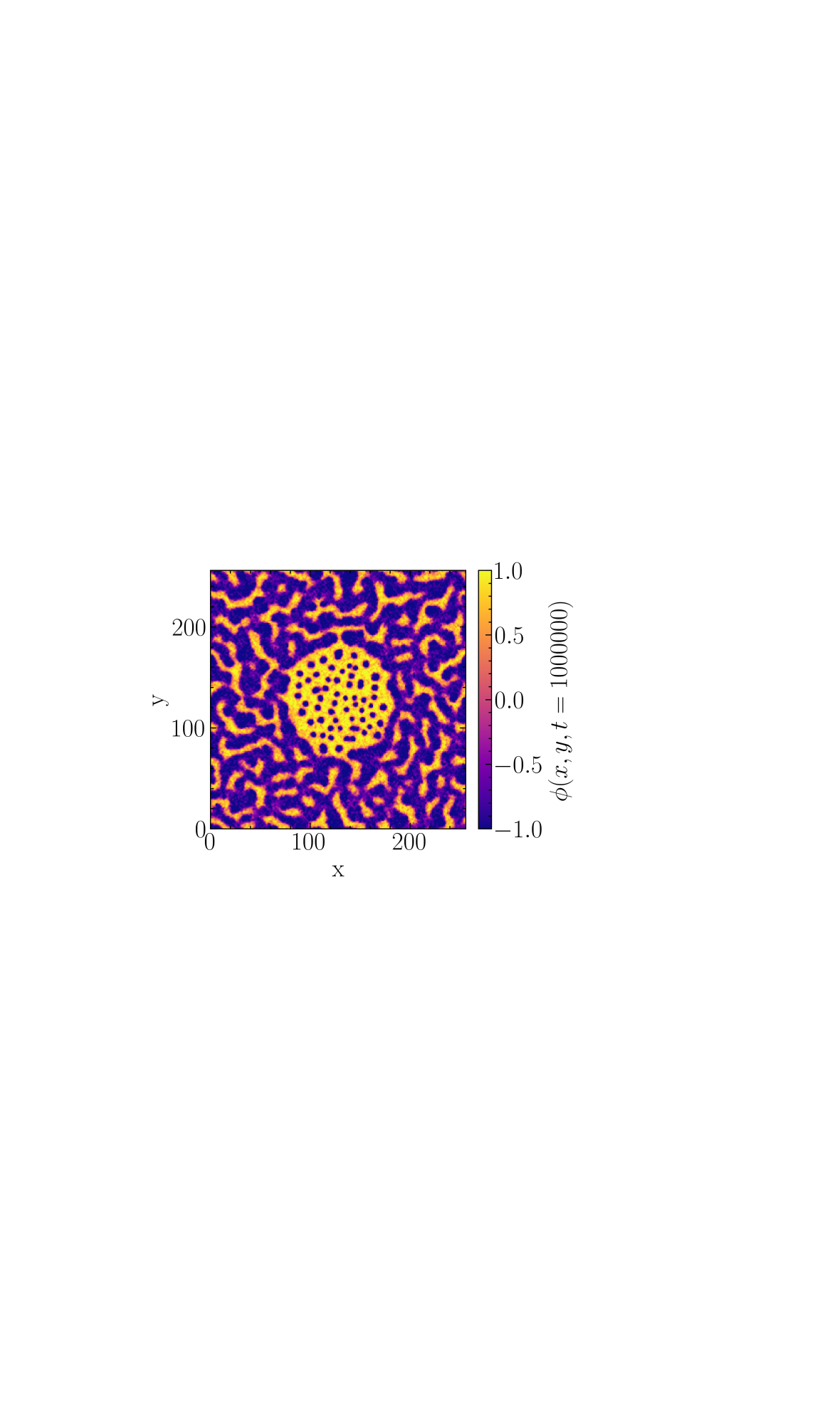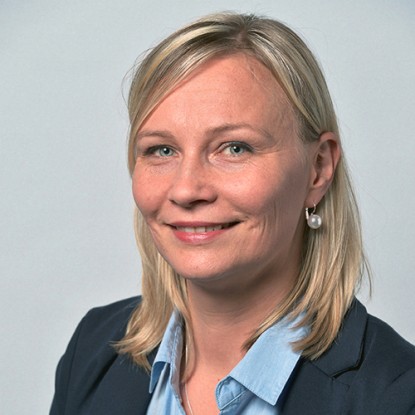Institute for Condensed Matter Physics
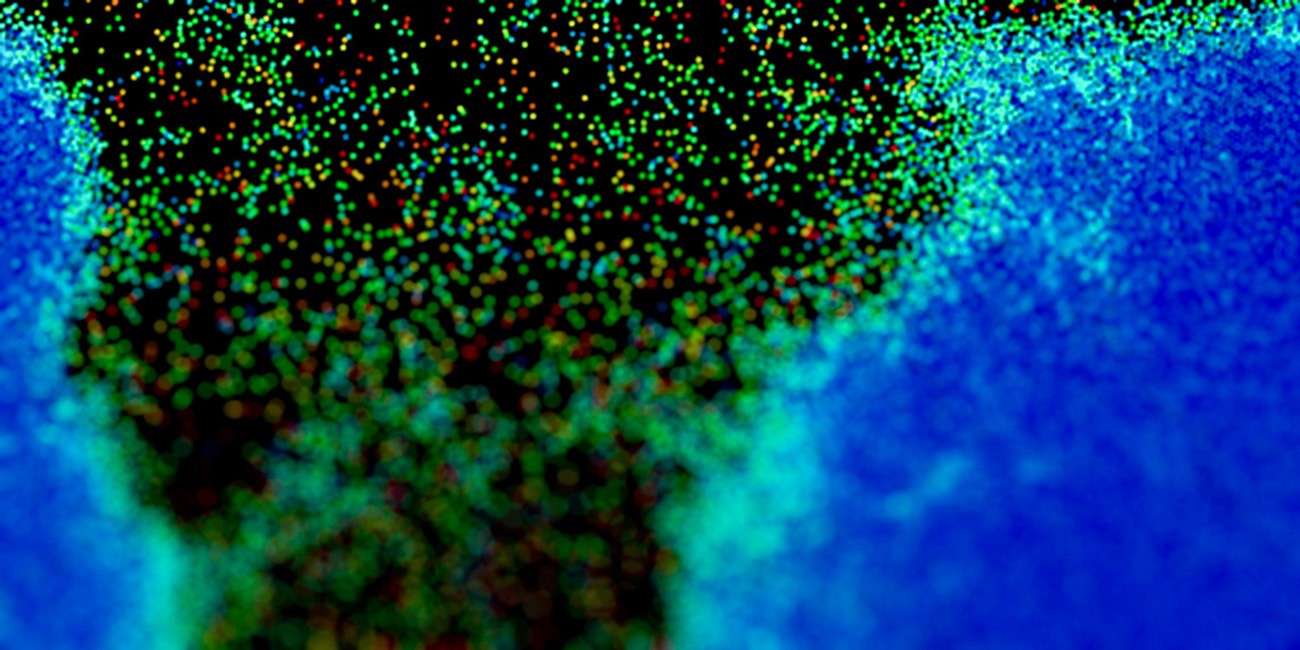
Research areas
Soft Matter Physics describes a broad class of materials such as polymers (e.g. plastics, DNA), colloids (paint, milk, blood), surfactants (detergents, soap) and liquid crystals (LCD displays, tobacco mosaik virus). We aim at modeling and describing these systems from a physics perspective, often combining particle based computer simulations with theoretical techniques, e.g. to derive field equations (stochastic or deterministic PDEs) for active matter, which we systematically analyze and try to simplify, using tools from nonlinear dynamics and statistical physics.
Active soft matter
Active soft matter comprises motile agents such as bacteria or synthetic colloidal microswimmers, locally injecting energy into the system. Following this local driving, active soft matter is intrinsically out of equilibrium, creating a challenge for the (statistical) description of its behavior and evoking fundamental questions, e.g. regarding the existence of an (unconventional) thermodynamics for active matter or regarding the properties and strength of the (effective) interactions acting among its components.
Pattern formation
Remarkably, interactions among constituents are non-reciprocal (and non-instantaneous) in some active systems, allowing for phenomena such as the emergence of directed propulsion of a pair of non-moving particles once they get in contact. More generally, the nonequilibrium character of active systems and the unusual interactions among its components creates a rich phenomenology, including spontaneous self-organization in the form of complex dynamical patterns comprising e.g. traveling, living and exploding clusters. This tendency to form patterns makes active soft matter systems an interesting platform for studying nonequilibrium self-assembly, often leading to highly complex functional units in biological systems. Synthetic active systems provide a comparatively simple alternative to analyze self-assembly out of equilibrium.
Functional active matter and machine learning
While it is now possible to create synthetic microswimmers, e.g. in the form of autophoretic active colloids, they do not yet reach the autonomy, sophistication and functionality of their biological counterparts. We use machine learning – in particular deep reinforcement learning – to explore pathways to equip microswimmers or larger active particles with advanced functionalities, such as the abilities to efficiently navigate in complex environments, to communicate with each other and to plan ahead. In particular, we are also interested in using machine learning to direct the collective behavior of active matter systems and to learn coarse-grained models for its description.
Directed particle transport in soft matter and biological systems
We are also interested in the emergence of transport, or directed particle motion, in unbiased environments. Such problems include the directed motion of driven colloids on suitable substrates but also deterministic Hamiltonian ratchets, which we analyze using tools from nonlinear dynamics. To create transport in an unbiased environment, a system has to break certain spatio-temporal symmetries, either through the environment (e.g. substrate, external field) or spontaneously. The latter case is likely to be involved, e.g. in directed cell migration in bulk, which is still not fully understood, and which we model and analyze based on coupled field equations.
Breathing particles and microgels
Microgels are colloids made of certain polymer networks (often pNIPAM), which reversibly shrink and swell in response to changes of temperature, following a so-called volume phase transition. We have a growing interest in modeling microgels and their collective behavior. Following their responsiveness to changes in the environment (e.g. of temperature or solvent composition), microgels are popular candidates for the design of ‘smart materials’ acting e.g. as sensory systems or drug carriers. Currently, we are interested in descriptions of the collective behavior of microgels (or simplified “breathing particles”) using field equations and in the controllability of phase transitions in these systems via external stimuli. Hydrogels offer a vast amount of potential applications with an enormous social and technological potential. To keep up with the fast growth of experimental advances there is a need of a flexible and reliable framework for molecular dynamic simulations to bridge the gaps between our theories and experimental data.



